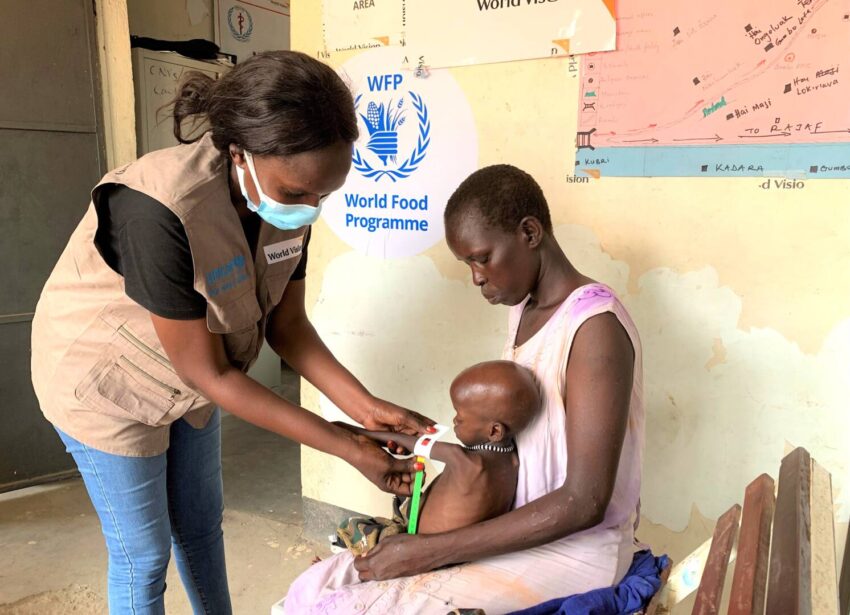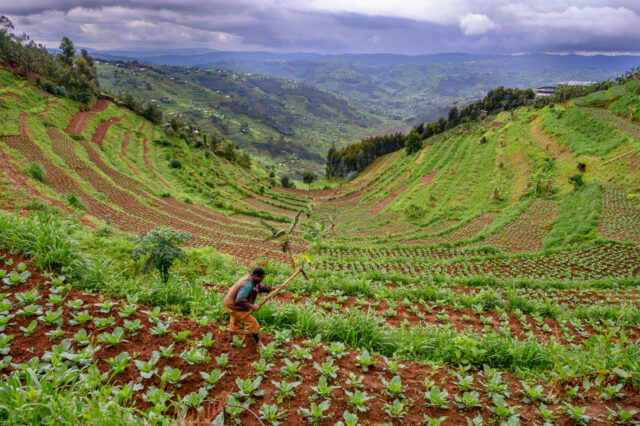The number of people affected by hunger in the world continues to climb amid the COVID-19 pandemic.
Around the world, it’s estimated that as many as 811 million people regularly go to bed hungry, according to a report from the United Nations food agencies. That’s about 9.9 % of the world’s population, according to “The State of Food Security and Nutrition in the World 2021.”
Conflict, drought, and the devastating impacts of the pandemic on nations’ economies are reversing years of progress.
Close to 12% of the global population was severely food insecure in 2020, representing 928 million people — 148 million more than in 2019, according to the report released by the Food and Agriculture Organization (FAO), the World Food Programme (WFP), the International Fund for Agricultural Development, the World Health Organization (WHO), and the U.N. Children’s Fund (UNICEF). World Vision is the WFP’s largest implementing partner worldwide.
More than half of the world’s undernourished people live in Asia — 418 million. The number of hungry people in Africa represents more than one-third of the world’s undernourished. That’s over 282 million people who experience hunger, more than double the proportion by population of any other region in the world.
Learn more about the worst spots for hunger in the world, what World Vision is doing to help end world hunger, and how you can help hungry children and their families.
Where are the worst spots for hunger?
The five regions with the highest number of hungry people as a proportion of population include:
- Middle Africa: 31.8%
- East Africa: 28.1%
- Western Africa: 18.7%
- Caribbean: 16.1%
- Southern Asia: 15.8%
U.N. agencies including WFP and FAO warned that significant deterioration of food insecurity in 20 areas — called “hunger hotspots” — would occur from February to May 2022. Ethiopia, Nigeria, South Sudan, and Yemen are at risk for catastrophic levels of hunger, malnutrition, and starvation. Afghanistan, the Central African Republic, the Democratic Republic of the Congo, Haiti, Honduras, Sudan, and Syria are among countries facing critical levels of food insecurity.
Learn more about Africa’s hunger crisis and what World Vision is doing to help hungry children and families.
The world falls behind in ending hunger by 2030
In 2015, world leaders gathered to establish the U.N.’s Sustainable Development Goals (SDGs), a collection of 17 global goals designed to be a “blueprint to achieve a better and more sustainable future for all.”
Among the SDGs is the commitment to end hunger and malnutrition by 2030, ensuring all people, in particular individuals living in poverty and vulnerable situations, have sufficient and nutritious food throughout the year.
However, current efforts and progress are not enough. Conflict, the COVID-19 pandemic, and extreme weather events have made achieving these goals even more difficult, exacerbating underlying inequalities around the world.
At World Vision, we’re committed to partnering to achieve these goals — and we praise the progress that has been made — while adapting and adjusting our programs to respond to current realities.
How World Vision tackles hunger
A key way World Vision strives to eliminate hunger is by promoting food security and livelihood stability in local communities throughout the world. Much of this work is funded by faithful donors who sponsor children, with help from government and private grants.
In just five years, together we impacted the lives of over 200 million vulnerable children by tackling the root causes of poverty. We believe by eliminating poverty, we can end hunger, too. Over the last 10 years, 89% of the severely malnourished children we treated made a full recovery.
During disasters and other food crises, World Vision provides immediate food aid to help people get through the worst days and save the lives of children and other vulnerable people. When the situation improves, we continue to help communities recover and build their capacity to provide food for themselves and their families.
Since many people in developing countries make their living by farming small plots of land, our programs give them access to agricultural tools — like hardy, drought-resistant seeds — and provide training in crop diversity and rotation techniques, livestock farming, and water retention and irrigation. These improvements help families boost long-term food production and benefit the land by minimizing soil erosion and water loss.
We also help local farm groups join together to store and market their crops. They take advantage of pricing and discounts and eliminate middlemen and product loss.
In addition, our staff teach mothers and fathers about proper nutrition with locally available foods and new preparation techniques, so children are better nourished. Loans and business training help individuals bring their business ideas — such as owning a small store or making furniture — to life, so they can increase their income and thrive.
How you can help end world hunger
- Pray for children and families affected by chronic hunger, which has devastating long-term effects. Pray that nutritious food will be readily available for hungry families in these communities and that they can afford to buy or raise it.
- Pray for people in developing countries who are impacted by the COVID-19 pandemic and are facing physical, financial, social, and spiritual hardship.
- Sponsor a child today. Sponsorship is the most powerful way you can fight poverty. When you sponsor a child, you help their family and community gain sustainable access to basics like nutritious food, healthcare, clean water, education, and more. You’ll help change the life of your sponsored child, his or her family, and their entire community.
- Help provide life-saving food and care. Your gift will help hungry children and families worldwide get access to essentials like emergency food, agricultural tools and training, clean water, medicines, and more.




